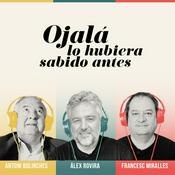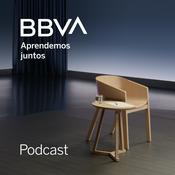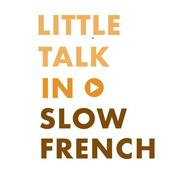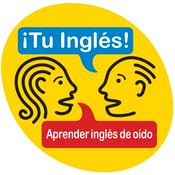653 episodios
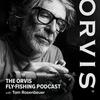
Backcast: Foraging Along Trout Streams, with Sam Thayer
22/12/2025 | 1 h 20 min
This episode was originally published on July 14th, 2023. I think most stream anglers are interested in foraging, since we're immersed in nature all day long and although we watch for fish and insects and birds, many of us don't pay attention to the plants. And there are many delicious plants along trout streams you can take home for dinner—most of which will be more nutritionally dense than what you buy in the store—and free. If you have done any foraging at all, you have probably read some of more of Sam Thayer's [40:38] books. In our household his books are the primary source. I was lucky enough to spend some time talking to Sam about why foraging along streams is especially good, and what we can expect to find there. In the Fly Box this week, we have no phone calls but some great questions via e-mail, including: Why do trout in small streams take flies more readily when the water is high? Where do you recommend I go trout fishing in the East in July when I visit this summer? A great story about a listener getting generous advice from a famous angler along a trout river. A tip for keeping rod sections together using clothespins. What is the best streamer reel, line, and leader for a 7-weight rod? What do you do when there is a very heavy hatch and almost too many natural insects? I am having trouble hooking fish using the hand-over-hand retrieve when striper fishing. What can I do to increase my hooking rate? What are three things a novice dry-fly angler should pay attention to? Do you ever tie up dry/dropper rigs at home prior to going fishing? Will my 8-weight be enough rod for fishing for striped bass from a boat? What are some tips on picking flies for striped bass fishing at night?

Backcast: Late Fall and Winter Nymphing, with Alex Waller
22/12/2025 | 1 h 22 min
This episode was originally published on November 3rd, 2022. My guest this week is Alex Waller [41:36] from New Zealand. You've likely seen his great videos on Orvisnews.com or on You Tube, in his channel Trippin on Trout. Alex shares his techniques for fishing nymphs in late fall and winter with us, and his techniques are a bit different than what most of us use, so you make pick up some tips for your own trout fishing wherever you live. And because he often fishes for migratory rainbows coming out of giant Lake Taupo, his techniques will play well with Great Lakes "steelhead". In the Fly Box this week, we have a host of interesting questions, including: What is the most buoyant natural material for dry flies? Does adding UV resin to dry flies affect their buoyancy? What is the best way to carry and store tube flies? Is there a universal rule for what size nymph you can use on a dry dropper? How do I keep my hook gap clear of materials so I don't miss strikes? What should I do when a big fish shakes its head when fighting? If black is the most visible color for flies, why do some anglers prefer black hooks when fish are spooky? If black is most visible in murky water, why do some people recommend bright flies under these conditions? I am stuck in the rolling plains of the Midwest, four hours from a trout stream. Can I still go fly fishing? A local river is highly pressured with very clear water, so everyone uses tiny midges. Would a bigger fly work sometimes? What is the best upgrade I can make to my Clearwater outfit, without spending hundreds of dollars? Do you ever swing wet flies in small streams? If so what leader do you use? When do you use a strike indicator instead of a dry dropper? And what kind do you use? I have a floating line for striped bass fishing and have done well with it. What other line would you recommend? What do you suggest if I want to try night fishing for striped bass?

Backcast: All About Bamboo Fly Rods, with Shawn Brillon
15/12/2025 | 1 h 41 min
This episode was originally published on August 19th, 2022. Want to know how a bamboo fly rod is made? How long it takes to make one? How many different hands touch an Orvis bamboo fly rod before you (and your children and grandchildren) become its lucky owner. And finally, what's so great about bamboo fly rods? How are they different from fiberglass and graphite, and what will they do for you on the water? This week I interview Orvis bamboo fly rod craftsman Shawn Brillon [45:09], who loves to talk bamboo rods as much as he enjoys making and fishing them. In the Fly Box this week, we have some great questions and tips from listeners, including: I could catch rising trout in one part of a pool, but when I moved 50 meters upstream I couldn't catch any. What was going on? How do I determine the correct size leader if I am going from a single size 16 fly to a hopper or multiple nymph rig? What are your thoughts on weed guards on flies? I caught a dragonfly on my elk hair caddis. Am I the first? I hooked a trout in the corner of the mouth and even with a barbless hook it bled and looked like it would die. Would it have been better if I left the fly in the fish? I have been fishing with an 8-weight shooting head outfit for striped bass and halibut. I want to catch corbina but I hear they are spooky. Do you think my 8-weight is too heavy? I keep seeing these large fish rising in a heavily pressured river but can't catch them on any multi-fly rig. What can I do to fool these fish? What do you do to stay in shape for fishing? What are the advantages of a big dry fly over a bobber? Does bead size really matter regarding attractiveness to trout? And is there a seasonality to what color beads you should use? I have been catching catfish on a fly. Does anyone else do this and is it a "thing" or is it bycatch? I went to Banff to fish and they required that all my tackle, including lines and leaders, could not have been used for 45 days and had to be cleaned and treated. What do you think about the potential for things like lines and leaders to transfer invasive species?

Backcast: Fly Fishing from Canoes and Kayaks, with Ryan Lilly of Old Town Canoe
08/12/2025 | 1 h 39 min
This episode was originally published on March 10th, 2023. Learn how to decide between a canoe and a kayak, what kind to get, and how to maneuver and cast using these hard-sided watercraft (next week I'll be doing a podcast on inflatables). Ryan Lilly [47:30] is a fly fisher and Old Town's expert on fishing from these craft, and has many great suggestions for how to make the most out of your canoe or kayak experience. In the Fly Box this week, we have some interesting questions that I'm sure will be of interest to many of you, as well as some thoughtful tips from other listeners, including: What do bead-head nymphs imitate? Aren't flies tied without beads more natural in the water? Isn't it more natural to use a nymph without any added weight? How do you fish wet flies? Do you use a single one or more than one? And do you ever use weighted wet flies? I recently saw a bunch of large carp in a pond in Florida. Why didn't I see any smaller ones? I had trouble getting a good drift against the slow water on the far bank of a river. Every time I tried to mend my line the small dry fly sank. What else could I have done? Can I fish two dry flies at once? A suggestion from a listener on why upgrading from an entry level fly line is a wise investment. Are there any performance differences between a 6-piece rod and a 4-piece rod? How can I get an extra tip for my Orvis rod? A great tip from a listener on how to make a device to hold scrap pieces of tippet using two pieces of Velcro. I am going to a place where they have stocked golden rainbows. Do these fish behave any differently from normal rainbows? Can I use a Poly Leader for tarpon? Is there any difference between up-eye and down-eye hooks? A tip from a listener on how to change thread colors with a permanent marker. A tip from a listener on how to keep a partially used tube of Aquaseal stay fresh. Why do people hold bass by the jaw? I have heard that this can dislocate their jaw. I am taking my first guided trip. Should I do a float trip or a walk/wade trip?

How to Take Great Fishing Pictures with Your Smartphone, with Chris Niccolls
01/12/2025 | 1 h 25 min
My guest this week is photography expert and co-host of the Petapixel podcast Chris Niccolls [28:39]. Chris has access to nearly every kind of expensive camera in the world because he evaluates photo equipment for his day job. But when he is fishing, guess what he takes most of his photographs and videos with? You guessed it—his iPhone. Chris shares tips on how to set up your shot, how to get a photograph and still have minimal fish handling, and what settings to use on your phone. He also gives great tips on setting up the scene so that your photos are better than just grip & grin snapshots. In the Fly Box this week, we have these questions and tips: You say Orvis fly rods are true to line weight but you say you use a line that is a half-size heavy. Why? With a fly line that is rated for colder water, is it OK to use it for the occasional largemouth bass fishing trip in warmer water? A tip from a listener on how to get an estimate of a fish's length and weight using AI. A tip from a listener on great places to fish close to Chicago. Can I get a rod that is suitable for carp and for large salmon in the Great Lakes? How can I target suckers on a fly rod? Would a leader with a long stiff butt and abrupt taper be a good one for fishing big Chubbies in western rivers? What do you think of double taper leaders? What are some fly fishing books form the 1960s and earlier that are still worth reading? A great tip from a listener on using hockey laces for wading boots. A tip from a listener on a hot fly to use in the Driftless Region during the winter. Is there a trick for fly casting in rough seas?
Más podcasts de Educación
Podcasts a la moda de Educación
Acerca de The Orvis Fly-Fishing Podcast
Escucha The Orvis Fly-Fishing Podcast, GÉNESIS 2:24 - PODCAST y muchos más podcasts de todo el mundo con la aplicación de radio.es

Descarga la app gratuita: radio.es
- Añadir radios y podcasts a favoritos
- Transmisión por Wi-Fi y Bluetooth
- Carplay & Android Auto compatible
- Muchas otras funciones de la app
Descarga la app gratuita: radio.es
- Añadir radios y podcasts a favoritos
- Transmisión por Wi-Fi y Bluetooth
- Carplay & Android Auto compatible
- Muchas otras funciones de la app


The Orvis Fly-Fishing Podcast
Descarga la app,
Escucha.

